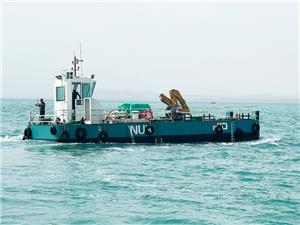How To Preventing Clogging in Dredger Discharge Pipelines
Dredgers play a crucial role in dredging projects, but clogging in the discharge pipelines is common during operations. It not only affects work efficiency but also increases project costs. Today, let’s explore how to prevent clogging in dredger discharge pipelines.

Selecting Appropriate Discharge Pipes
Choosing the right discharge pipe based on the specific conditions of the dredging project is key. Pipes with a diameter that is too small will reduce slurry flow velocity, increasing the risk of clogging, while overly large diameters can escalate costs. Thus, selecting an appropriately sized pipe is essential for preventing blockages.
Another important consideration is the pipe's material. Common materials include plastic, cast iron, and steel. Opting for materials with excellent corrosion resistance and compressive strength can enhance the pipe's durability and reduce the likelihood of clogging.
Optimizing Slurry Management
During dredging operations, it’s important to control the slurry concentration effectively. Overly high concentrations increase pipeline resistance and make clogging more likely. Adjusting the slurry concentration to maintain an optimal range is crucial.
Real-time monitoring of slurry flow and pressure is equally important. If a reduction in flow or an increase in pressure is detected, immediate action should be taken to address the issue. This can effectively prevent clogging in the discharge pipeline.

Strengthening Maintenance and Management
Preventing clogging in dredger discharge pipelines is essential for improving efficiency and reducing costs. Clogging can be effectively prevented by selecting the right pipes, optimizing slurry handling, strengthening equipment maintenance, and ensuring effective monitoring and management during operations. These measures will improve dredger performance and ensure the smooth progress of dredging projects.




